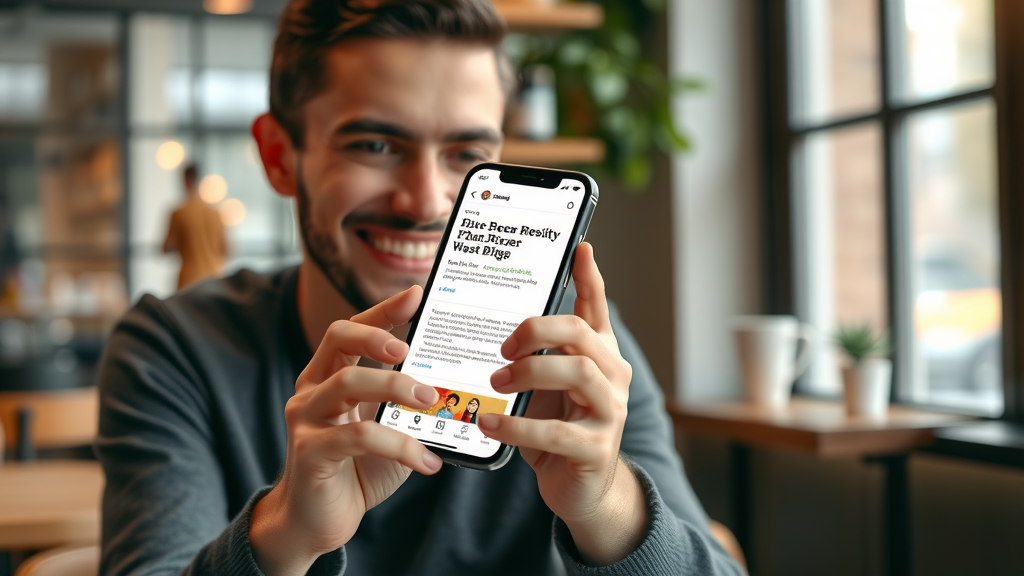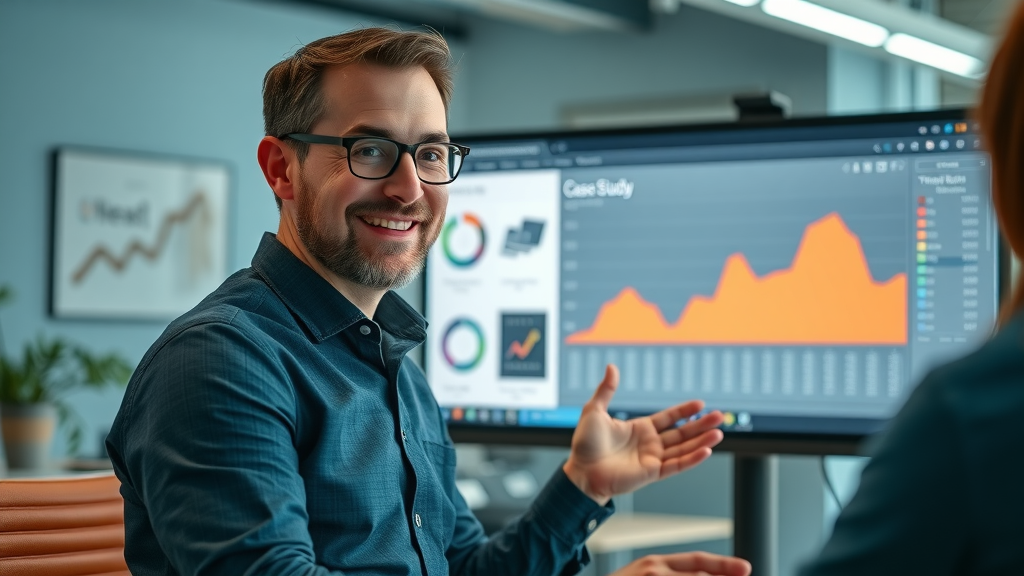Did you know that optimized blog posts can generate up to 300% more traffic compared to unoptimized content? In today’s competitive digital landscape, simply publishing great blog content is no longer enough. To stand out, attract massive clicks, and keep readers engaged, blog post optimization is the secret weapon you can’t afford to ignore. This comprehensive guide reveals proven strategies, real-world examples, and practical optimization checklists to drive your blog’s visibility and reader engagement to new heights. Read on to transform your blog from good to exceptional and turn every post into a traffic magnet.
How Blog Post Optimization Drives Massive Clicks: Surprising Stats and Insights
"Research shows that optimized blog posts can drive up to 300% more traffic than unoptimized content."

- Over 70% of clicks go to the top five results on Google search , emphasizing the importance of blog post optimization.
- Nearly 62% of marketers say consistent blog post optimization is their top strategy for increasing organic reach.
Statistics prove that blog post optimization isn’t just a trend—it’s a necessity. With most users clicking on the first few results on a search engine results page, well-optimized posts dramatically increase the odds of your content being seen. Marketers are prioritizing blog post optimization not only for more clicks but also for sustainable, long-term growth. The more discoverable and clickable your content, the more likely you are to convert casual readers into returning followers and maximize your content marketing ROI.
Advanced strategies like compelling meta descriptions, optimized title tags, and internal linking contribute to higher click-through rates (CTR) and organic traffic . As search engine algorithms become more sophisticated, posts that focus on both technical and creative optimization outperform those that rely on luck or outdated practices. Let’s dive deeper into how you can capitalize on these opportunities and make every blog post count.
Understanding Blog Post Optimization: Fundamentals and Objectives
- Defining blog post optimization and its role in maximizing clicks
- The evolving landscape of search engine algorithms
- Key objectives: visibility, engagement, conversions
At its core, blog post optimization is the strategic process of enhancing each post to perform better on search engines and resonate powerfully with readers. This involves refining not just text, but title tags, meta descriptions, images with alt text , and making each blog post share-worthy for social media . As the digital landscape evolves, so do search engine algorithms—meaning your optimization strategies must be flexible and data-driven.
The primary objectives of optimizing your blog posts are to increase visibility in search engine results , engage your target audience, and drive conversions. Proper optimization ensures your content ranks higher, delivers an outstanding user experience , and compels users to take action—whether that’s subscribing, sharing, or making a purchase. Ignoring key optimization elements can leave even high-quality blog content buried and unseen.
Setting the Stage: Why Your Blog Post Needs Optimization

The Power of Search Engine Traffic for Blog Posts
- Blog posts that are properly optimized for search engines rank higher and attract more organic visitors.
- Unoptimized content often remains invisible in search results , losing valuable traffic.
Ranking high on a search engine results page (SERP) is essential, as most potential readers never scroll past the first few listings. Optimized blog posts utilize effective keyword research, title tags, and meta descriptions to capture searchers’ attention. Conversely, blog content that ignores these elements often languishes unseen, no matter how helpful or well-written it is.
With Google search updating algorithms regularly, consistent optimization is vital. A single well-optimized blog post can outperform dozens of unoptimized ones, driving sustained organic traffic and boosting your website’s domain authority. By aligning your content with both user intent and search engine requirements, you lay the groundwork for exponential growth.
How Social Media Amplifies Optimized Blog Posts
- Exploring the role of social media sharing in extending your blog post reach
- Understanding how optimization makes content more share-worthy and discoverable
Social media acts as a megaphone for your optimized blog posts, exposing your content to new audiences and driving referral traffic. When a blog post is crafted with social sharing in mind—through engaging visuals, click-worthy titles, and succinct summaries—it’s more likely to be shared across channels like Facebook, Twitter, or LinkedIn.
Optimization makes your content more discoverable and enticing for users who come across it organically or through social feeds. Embedding shareable graphics, open graph tags, and integrating quotes or snappy insights can vastly boost social media engagement. An integrated approach leverages both SEO and social media for maximum reach and engagement.
Critical Components of Blog Post Optimization
Blog Posts and Meta Descriptions: Capturing Clicks
- Crafting irresistible meta descriptions to boost click-through rates
- How blog post meta descriptions affect search rankings and user experience

The meta description is a brief summary of your blog post that appears beneath the title on a search engine results page . Crafting a compelling, benefit-driven meta description increases the likelihood of users clicking your link over competitors. Use actionable language and include your target keyword naturally.
Optimized meta descriptions not only improve click-through rates but also enhance your post’s relevance and credibility in the eyes of search engines . They impact rankings indirectly by influencing user behavior, signaling to algorithms that your content satisfies user intent. Remember, a well-written meta description makes your post irresistible in both search and social share snippets.
The Importance of Keyword Research in Blog Post Optimization
- Conducting effective keyword research for your blog posts
- Balancing search engine demands with user intent
Keyword research is the cornerstone of every high-performing blog post. Identifying the terms your audience is actually searching for—using a dedicated research tool —ensures that your content aligns with both search engine algorithms and real user needs. Avoid keyword stuffing ; instead, weave primary and secondary keywords naturally throughout your content for a seamless reading experience and optimal indexing by search engines.
Successful keyword research reveals gaps, opportunities, and helps you uncover high-intent topics that drive conversions. Use tools like SEMrush, Ahrefs, or Google Keyword Planner to discover trending keywords for your blog, and analyze the engine ranking of similar blog posts for benchmarking. Remember, understanding and satisfying user intent is the real secret behind every well-optimized blog post.
Optimizing Title Tags and Headers for Your Blog Post
- Using the main keyword in H1, H2, and H3 titles for maximum SEO benefit
- Crafting compelling titles that attract both search engines and readers

The title tag is arguably the most important on-page SEO signal. It’s the first thing users see in search results and sets expectations for the content. Ensure your primary keyword is present in your H1 and sprinkled naturally in H2s and H3s for a hierarchical SEO approach. Compelling, benefit-driven titles not only improve visibility but also encourage readers to click and engage with your blog content.
Don’t overlook the power of descriptive headers in structuring your blog post. Well-organized headers improve user experience by making content scan-friendly and signaling key sections to search engine crawlers. Effective header optimization is a blend of SEO-relevant keywords and messaging clarity, leading to improved rankings and longer on-page times.
Creating Engaging and SEO-Optimized Content for Blog Posts
Structuring Your Blog Post for Search Engines and Readers
- The F-shaped reading pattern : placing critical information first
- Logical flow and scannability for better user experience
Readers scan web content in an “F” shape, focusing heavily on the beginning of paragraphs and major headlines. By front-loading your blog content with the most important points and keywords, you capture attention and satisfy both human readers and search engine algorithms. Clear, logical structuring means each section delivers on the user's search intent, leading to higher dwell time and a lower bounce rate .
Break your blog post into short, digestible sections with informative headers, bullet points, and visual cues. This not only makes your content easy to scan but also ensures search engines can logically crawl and prioritize your main topics. Remember: a well-structured blog post keeps your audience engaged and signals high relevance to search engines.
Writing for Readability and Social Media Sharing
- Short paragraphs and use of images (img) to break up text
- Integrating social media snippets and calls-to-share
Short paragraphs, relevant images, and concise sentences greatly improve the readability of your blog posts . Incorporate eye-catching imagery and embed calls-to-share to harness the power of social media . Snippets such as shareable quotes, tweetable stats, or infographic teasers encourage viewers to spread your post, expanding your reach beyond search results .
Combine your written content with purposeful visual elements to maintain reader interest and make your post irresistible for sharing. This tactic not only garners social media attention but also signals engagement to search engines, contributing to a strong content marketing strategy and higher organic traffic .
Ensuring Visual Appeal with Images and Graphics
- Utilizing high-quality images (img) that reinforce SEO and engagement
- Alt-image tags and accessibility considerations

Including vibrant, relevant images in your blog posts provides more than just aesthetic value—it supports your SEO strategy as well. High-quality graphics, infographics, and custom visuals encourage longer dwell times and make your content more share-worthy on social media . Always use descriptive alt text that includes your target keyword, aiding search engines and promoting accessibility for every reader.
Optimized images with meaningful alt tags ensure your visuals are picked up by image searches and are accessible to users with disabilities, further broadening your potential audience. The right blend of text, images, and design increases the overall impact and memorability of your blog content, offering both instant engagement and long-term SEO results.
Advanced Blog Post Optimization Techniques
Leveraging Internal Linking for Higher Rankings
- Strategic internal linking to boost SEO and retain users
- Best practices for relevant and non-spammy links
Internal linking connects related blog posts across your website, guiding readers to additional valuable resources and keeping them engaged longer. These links help search engines understand your site structure, distribute link equity, and index new content faster. When used thoughtfully, internal links create a seamless user journey that enhances relevance and boosts engine ranking .
Avoid excessive or irrelevant links—every internal link should add value, match context, and lead users deeper into your content funnel. Well-planned internal links not only improve user experience but also signal topical authority to algorithms, leading to higher search engine rankings across your site.
Boosting Dwell Time and Minimizing Bounce Rate on Blog Posts
- The importance of engaging introductions and related content suggestions
- How reducing bounce rate positively impacts search engines
An engaging introduction hooks readers instantly and encourages them to explore further. Strategic use of related content widgets or in-text suggestions increases session duration and reduces bounce rate . Search engines interpret long dwell times and low bounce rates as signals of high-value content, which can boost your rankings over time.
Keep readers moving through your site by suggesting articles on similar topics, including calls-to-action for comments or shares, and providing clear, logical next steps. This not only enhances the user experience but also sends powerful engagement signals to Google search and other ranking algorithms.
Deploying SEO Plugins and Tools to Optimize Your Blog
- Top SEO plugins for effective blog post optimization
- How to use SEO tools to monitor progress and improve content

Powerful SEO plugins like Yoast SEO, Rank Math, or All in One SEO provide actionable insights and automation for content optimization. Features such as on-page analysis, meta tag optimization, and internal linking suggestions help streamline your workflow. Integrating reliable SEO tools allows you to monitor key metrics, analyze keyword competitiveness, and continuously refine your blog strategy.
Regularly tracking your blog post performance using analytics dashboards ensures you identify what works and make data-driven improvements. SEO plugins not only automate best practices but also alert you to new algorithm changes—so you can optimize your blog proactively and efficiently.
Optimizing Your Blog for Search Engine Algorithms
Updating Old Blog Posts to Boost SEO
- Why regular content updates matter for Google Search and other search engines
- Granular strategies for effectively updating blog posts
Regularly updating older blog posts signals to Google search that your content remains fresh and relevant. Periodic refreshes can catapult older posts up the search engine results page as algorithms value up-to-date information. Strategies include updating statistics, refining meta descriptions , optimizing alt text on images, and adding new internal links to freshly published content.
Establish a routine for auditing and updating your existing blog content . Focus on high-traffic or high-potential posts for priority updates, and schedule regular content reviews to maintain consistent performance across your site. This proactive approach pays compounding SEO dividends and helps you stay ahead of competitors.
Mobile Optimization and User Experience Enhancements
- Ensuring fast load times and responsive design
- Optimizing for mobile search engine ranking factors

With mobile users now representing the majority of web traffic, mobile optimization is non-negotiable. Ensure your blog posts load quickly, display well across devices, and provide seamless navigation. Slow, unresponsive designs lead to higher bounce rates and lower engine ranking —even if your content is excellent.
Follow mobile SEO best practices: compress images, use legible fonts, keep navigation simple, and test your site with tools like Google’s Mobile-Friendly Test. Enhancing user experience for mobile audiences secures higher engagement, shares, and rankings across all devices.
Measuring Success: Key Metrics for Blog Post Optimization
| Metric | Why It Matters |
|---|---|
| Organic Traffic | Shows growth from search engine optimization |
| Click-Through Rate (CTR) | Indicates meta description and title effectiveness |
| Bounce Rate | Reflects user experience and relevance |
| Social Shares | Measures social media engagement |
| Average Session Duration | Demonstrates engagement and dwell time |
Interpreting Metrics and Adjusting Blog Post Optimization Strategies
- Analyzing what the data reveals about your blog post performance
- Implementing continuous improvement based on analytics

Regularly reviewing your blog’s analytics reveals strengths, weaknesses, and untapped potential. If organic traffic or CTR is low, reassess your meta descriptions and headers. A high bounce rate may indicate content structure or relevance issues. Monitoring social shares and session duration lets you gauge content engagement and adjust promotion strategies accordingly.
Successful blog post optimization is iterative. Use key performance metrics as a roadmap to focus your updates and tests, ensuring you’re continuously driving better results. The most effective bloggers turn analytics into action, refining their process with every new post.
Answering Common Questions About Blog Post Optimization
What is the 80/20 Rule for Blogging?
The 80/20 rule in blogging means focusing 80% of your effort on promotion and optimization, and 20% on content creation. By dedicating more resources to optimizing and sharing your blog posts, you maximize the visibility and impact of every article published.
Do Blog Posts Boost SEO?
Yes! Consistently publishing optimized blog posts enhances your website’s authority and search engine visibility, driving more organic traffic. Each post strengthens your keyword footprint, attracts backlinks, and provides value to both users and algorithms.
Which SEO Tool is Best for Blogging?
There are several excellent SEO tools for blogging, including Yoast SEO, Rank Math, Ahrefs, and SEMrush. The best tool for you depends on your platform, budget, and required features—but all provide invaluable support for optimizing titles, keywords, links, and analytics.
What are the 7 Steps in Blogging?
The seven key steps in blogging are: 1) Topic and keyword research, 2) Crafting an SEO-focused outline, 3) Writing high-quality content, 4) Optimizing titles and meta descriptions, 5) Adding images and visuals with alt text , 6) Promoting via social media and email, 7) Reviewing analytics and refining your strategy.
Proven Strategies and Real-World Examples of Blog Post Optimization
- Case study: Optimizing a blog post to double organic traffic in 60 days
- Stepwise breakdown: From keyword research to social media promotion
"The difference between a good post and a great post is blog post optimization — making every element work for you."

In one real-world case, a single blog post saw its organic traffic double within 60 days. The process began with thorough keyword research and updating the meta description and title tag for stronger click appeal. Strategic internal links were added, high-quality visuals (with descriptive alt text ) were included, and the refreshed content was promoted across social media platforms.
Regular monitoring of analytics revealed what worked and where further tweaks were needed. Optimizations based on data—rather than guesswork—compounded results, demonstrating the transformative power of a comprehensive, systematic approach to blog post optimization .
Essential Blog Post Optimization Checklist
- Identify target keywords with high intent
- Craft SEO-friendly titles and headers
- Write concise and compelling meta descriptions
- Integrate relevant internal links
- Add high-quality, descriptive images (img) with alt tags
- Promote on social media platforms
- Monitor analytics and refine strategies
Key Insights for Mastering Blog Post Optimization
- Blog post optimization is an ongoing process, not a one-time task.
- Balancing user experience and search engine requirements is crucial.
- Leveraging social media and regularly updating content amplify your results.

Supporting Resources for Blog Post Optimization Success
- Recommended SEO plugins and tools
- Further reading: current search engine guidelines and algorithm updates
- Online courses for advanced blog post techniques
Next Steps: Maximize Clicks with Strategic Blog Post Optimization
- Apply the strategies outlined to your next blog post
- Continuously assess, test, and optimize for better results
- Share your successes with the blogging community
FAQs About Blog Post Optimization
-
How often should I update my blog posts for optimal performance?
Aim to review and update high-traffic or important blog posts quarterly, or whenever major industry changes occur. Regular updates ensure content remains relevant and competitive in search rankings. -
Can internal linking within blog posts improve SEO?
Absolutely! Relevant internal links help search engines crawl your site effectively and keep readers engaged, both of which improve SEO and overall site performance. -
Why is blog post optimization critical for long-term content strategy?
Optimization ensures each post achieves maximum visibility, engagement, and conversion potential. It's essential for sustainable growth and maintaining authority in your niche.

Expert Advice from Leading Bloggers and SEO Professionals
"Consistently optimizing your blog posts is the secret to sustained growth and authority in your niche."
- Insights from notable SEO experts on blog post optimization best practices
- Real-world testimonials and success stories
Skimmable Takeaways for Effective Blog Post Optimization
- Start every blog post with strong keyword research
- Prioritize titles, meta descriptions, and header structure
- Visual engagement and social media integration are must-haves
- Regular analytics tracking drives ongoing improvements
Recap and Action Plan for Blog Post Optimization Excellence
- Review the optimization checklist after every post
- Schedule regular audits for your existing blog posts
- Engage with your audience for feedback and continual refinement
Share Your Results: Join the Conversation on Blog Post Optimization
- We invite you to share your blog post optimization wins and discoveries on social media using #OptimizeYourBlog
- Let’s build a community of data-driven, successful bloggers!
References and Further Reading for Blog Post Optimization
- Official Google Search documentation on content optimization
- Top-rated SEO blogs and case studies
- Industry reports on current blogging trends
Explore More: Recommended Videos on Blog Post Optimization
- Video 1: Step-by-Step Guide to Blog Post Optimization (search engine and social media focus)
- Video 2: How to Use SEO Plugins for Blog Posts Optimization
- Video 3: Expert Interviews – Unlocking High-Impact Blog Post Optimization Strategies
Conclusion
Put these actionable blog post optimization techniques to work, monitor your analytics closely, and watch as your blog’s visibility and engagement soar. Start today—the next high-impact post could be yours!
 Add Row
Add Row  Add
Add 




Write A Comment